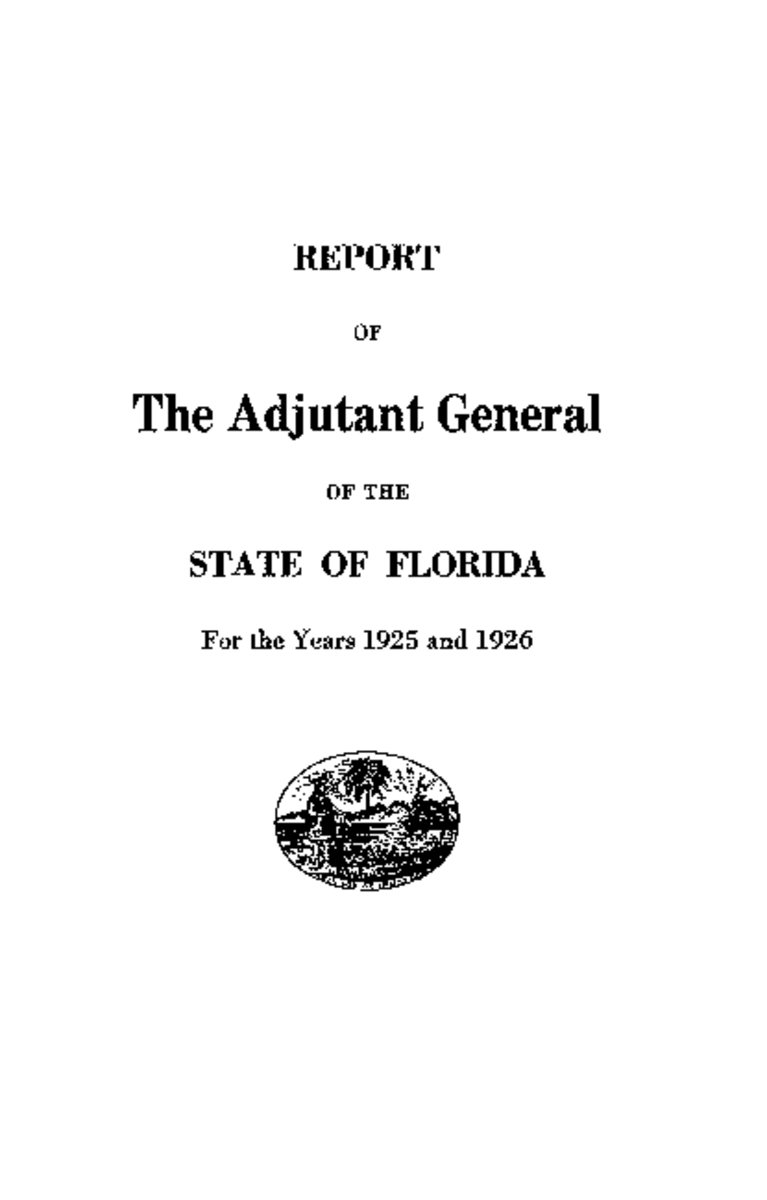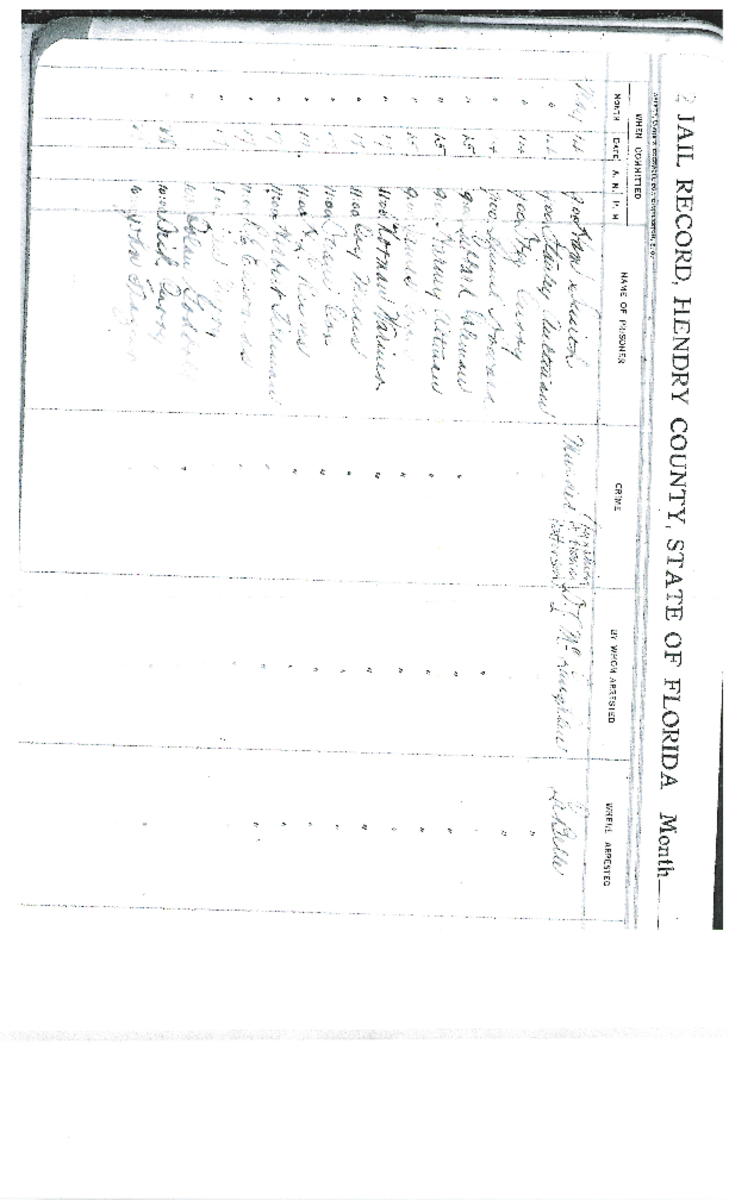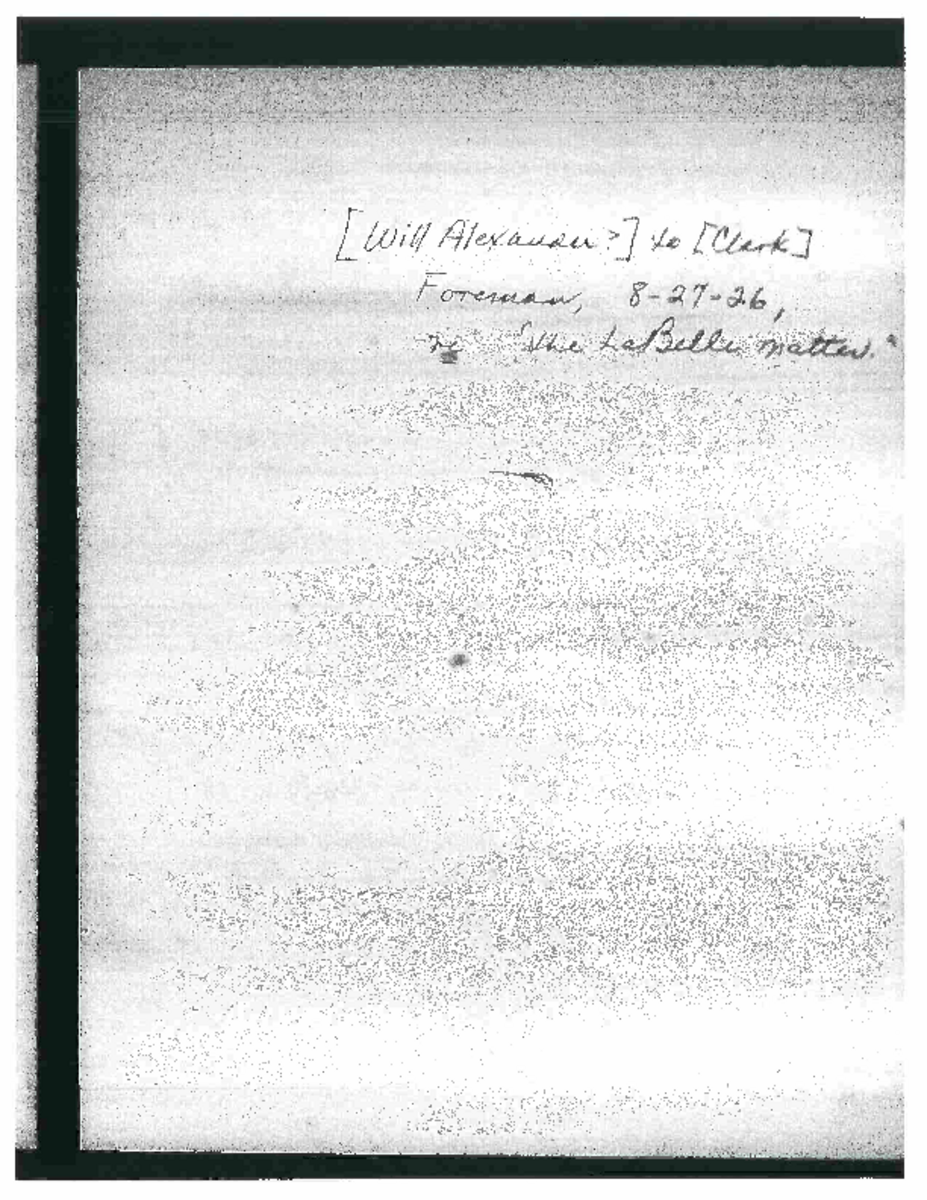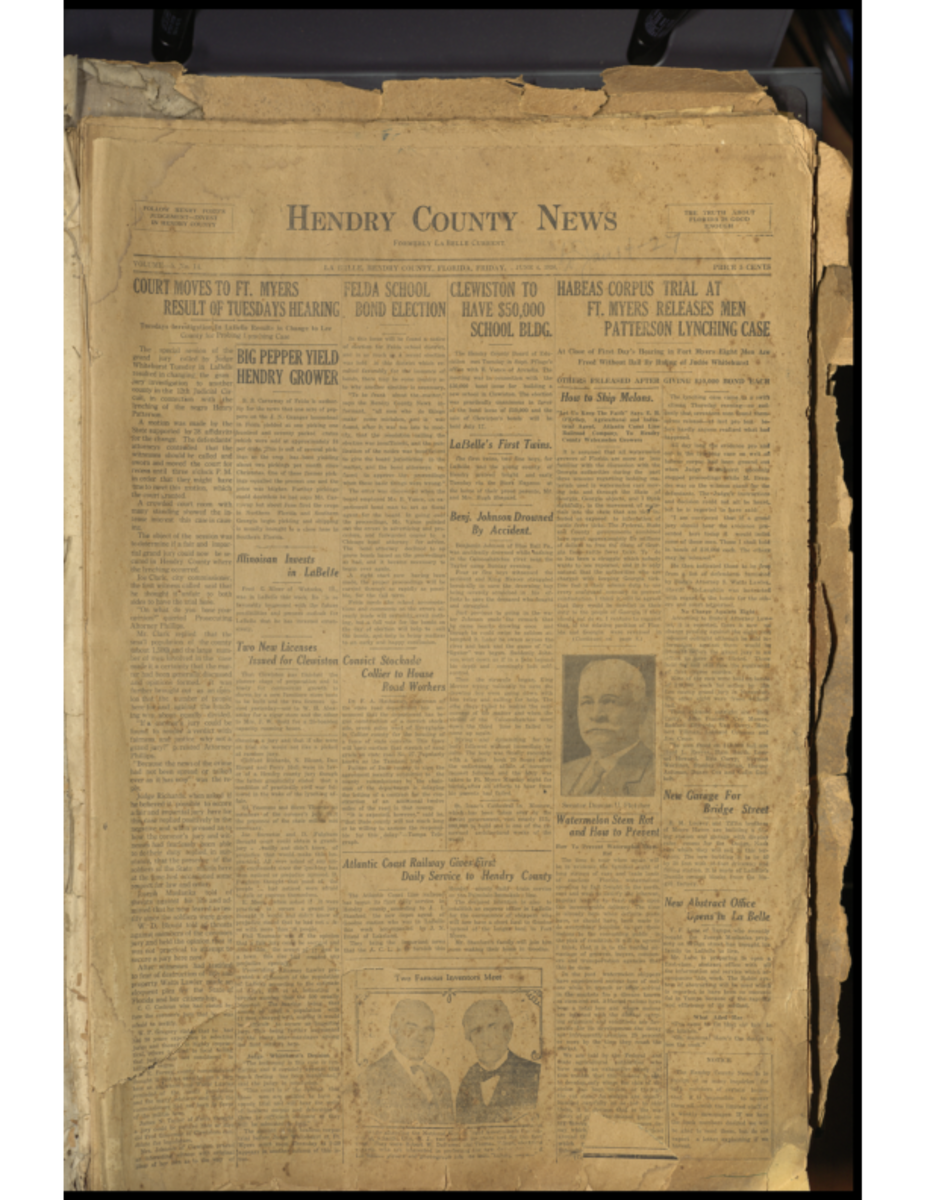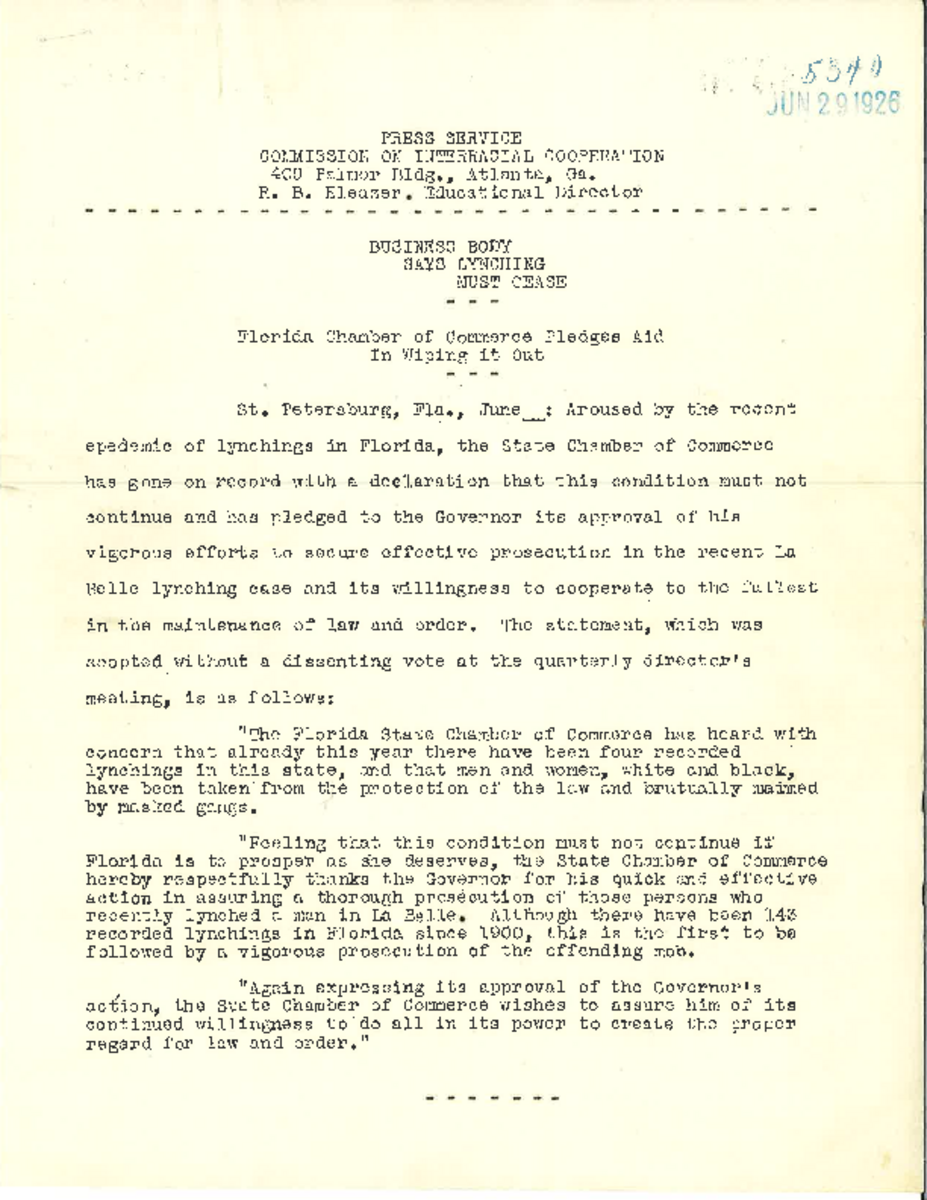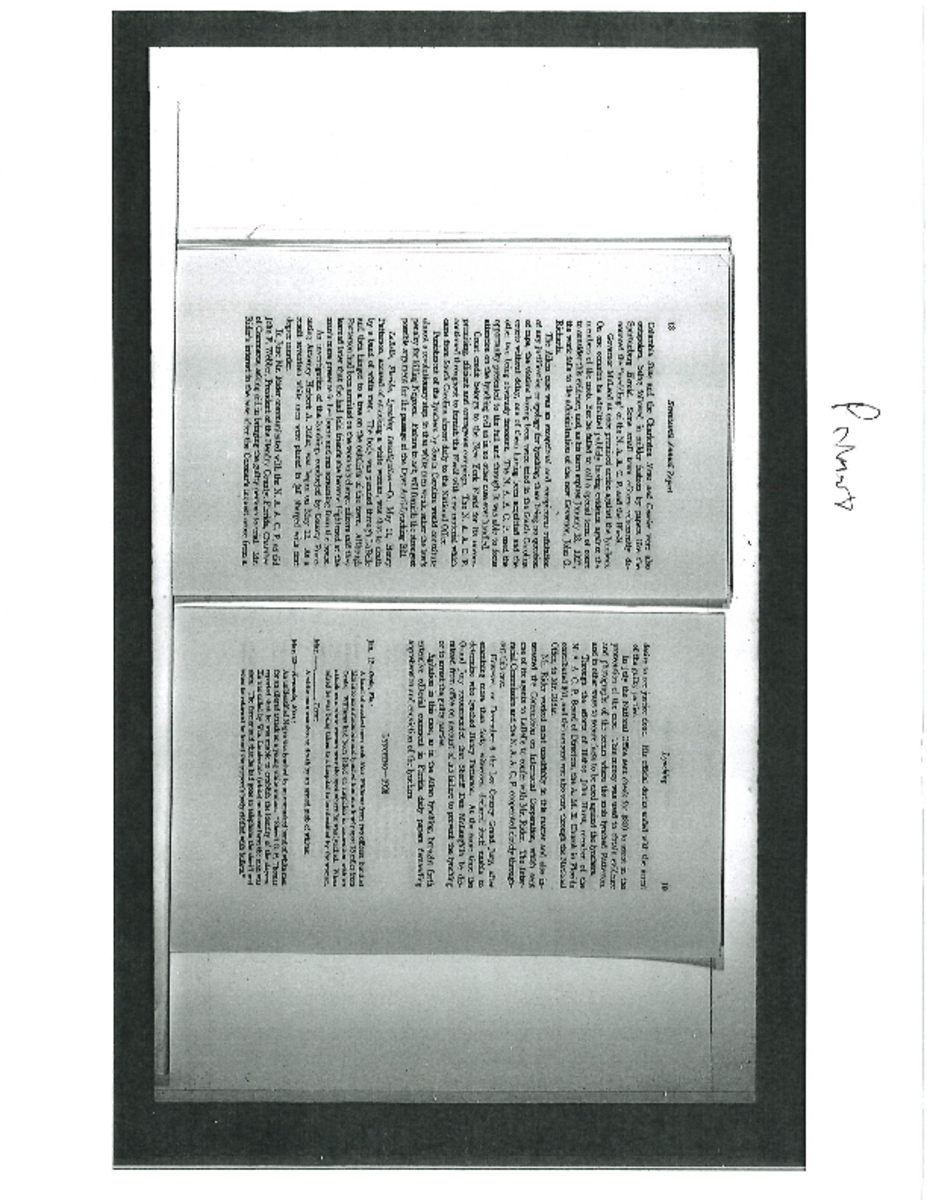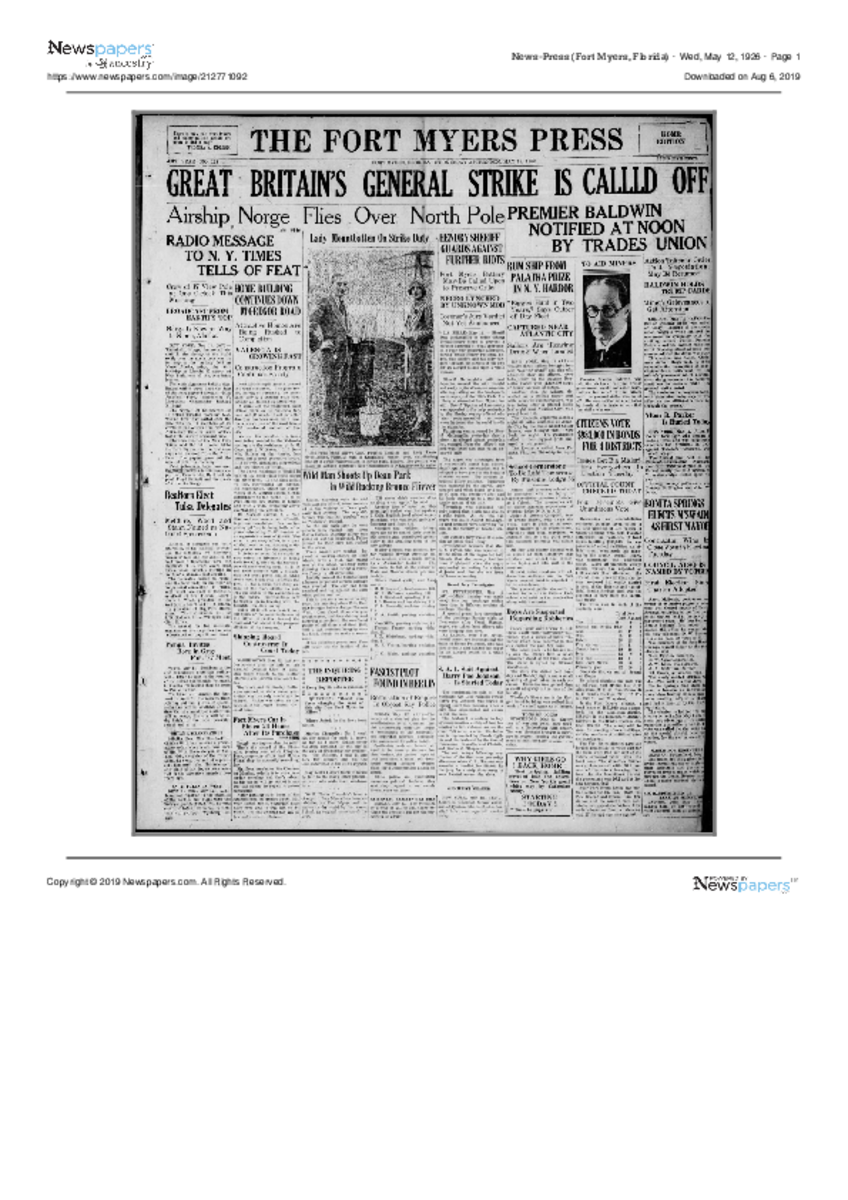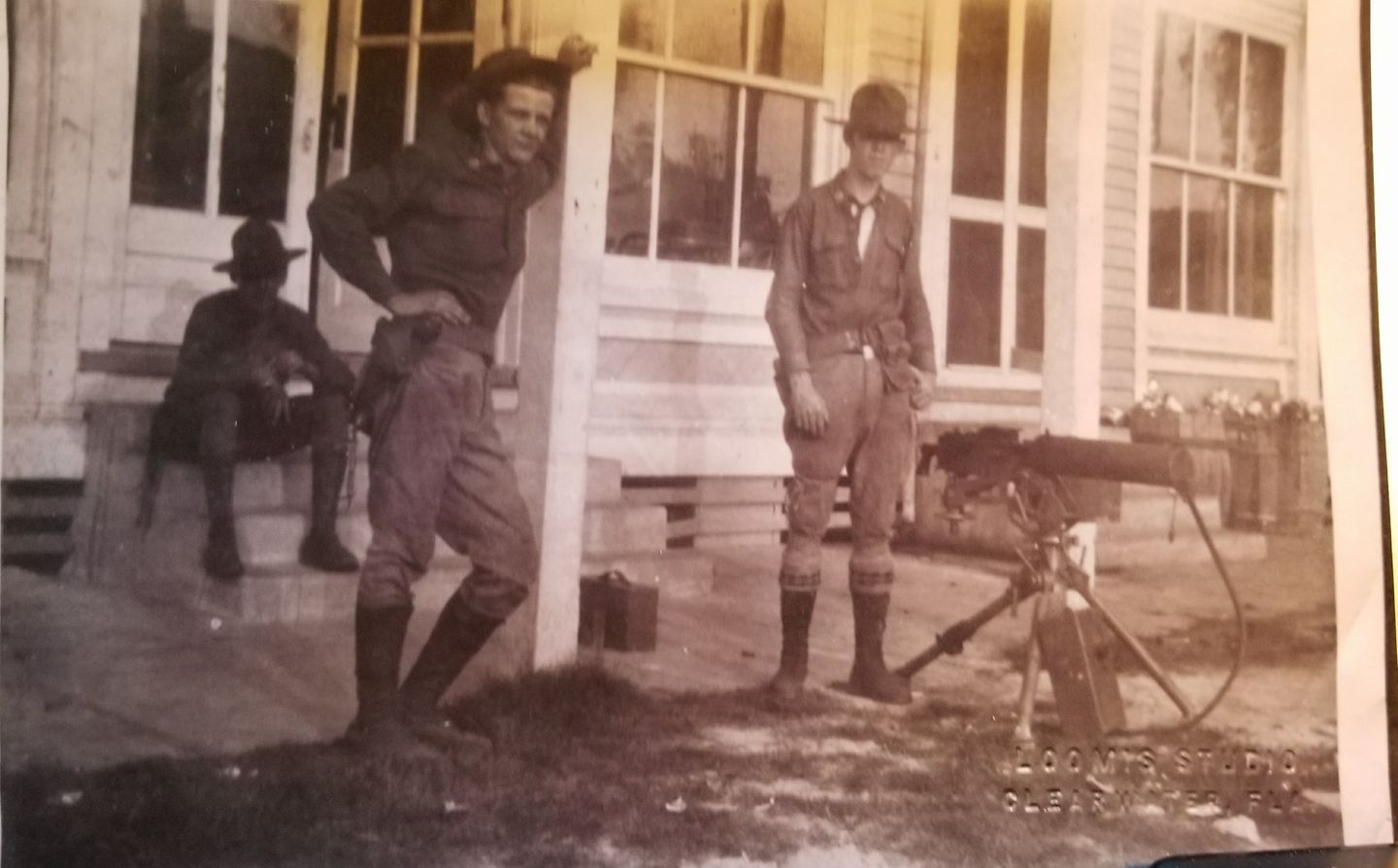Report of the Adjutant General of the State of Florida
This source includes the official dispatch of the National Guard to LaBelle, FL. The sheriff in LaBelle contacted the governor requesting assistance with the mob. The National Guard showed up on May 22nd and met little resistance. It is also included that the citizens were scared and relieved that support had arrived. This source includes a lot of detail into the situation at LaBelle in terms of the mob and how the National Guard supported the sheriff. While the details are lacking in terms of exactly what the National Guard did, this source is important when understanding the National Guard and why their support was requested.
Arrest Record
This arrest record, written up between May 14th to 18th, lists 17 people arrested on charges of “Murder (lynching of Henry Patterson).” Although there is not much detail in this report, listing specific people in connection with the lynching is significant in that for most of the 1890 to 1920 era, lynchings were typically attributed to “persons unknown.” That was not the case in the investigation into the lynching of Henry Patterson.
Commission on Interracial Cooperation Letter
The source presented is a letter from Will Alexander, the director of the Commission on Interracial Cooperation (CIC), to Clark Foreman, another member of the CIC, regarding the creation of a plan and a committee that could assist in the conviction of Henry Patterson's lynchers. In the letter, Alexander expresses his concerns and advises Clark on possible ways to obtain support for Henry Patterson's case. More specifically, Alexander suggests Foreman to obtain the legal cooperation of the state bar association and other legal professionals to bolster the case. The letter provides a look into the promising legal developments and growing support over the case following Patterson's lynching and the organizations and associations involved. Although a useful source for the legal battle surrounding Patterson's murder, the letter does not provide much description of the lynching itself.
Newspapers
These are newspapers from around the country, published the days after the lynching when the legal proceedings were starting up, that feature an article about the lynching. Although most coverage came from newspapers in the state of Florida, reports of this case extended from Los Angeles to New York, and many places in between. The notoriety of this lynching may have contributed to the response by the state and local officials, or at the very least put pressure on them to act more aggressively. It also is indicative the changing views of lynching across the nation by 1926. Most of the national attention came in May, but waned as the coroner’s inquest and legal cases came in June and November. The shift in coverage is indicative of the loss of interest in the case nationally as attentions focused on other issues. While the coverage does not necessarily add much to the understanding of specific events, the significance lies in how the case was covered nationally.
Henry Patterson’s Death Certificate, 1926
Although brief, the death certificate describes many significant details about the lynching of Henry Patterson. In this document, the coroner lists multiple things that were, in his opinion, related to the killing of Patterson. First and foremost, the document states that he was killed by a mob and hung after death in LaBelle's city limits. The coroner also included “prejudice and booze” to the list of intervening conditions and secondary or underlying causes of death. While we don’t know much about Patterson’s background or biography, there are a few details of interest listed on the death certificate, including that it states his family is from Memphis and that he was resided in LaBelle for only four months prior to his killing. It also states that he was buried in the “colored cemetery” in Glades County, just north of LaBelle. Although it does not provide detailed accounts of events or extended commentary on them, the information contained in the death certificate provides important insights into who Henry Patterson was and clues as to how seriously some local officials took the investigation into his death.
Hendry County News: June 4th & 11th, 1926
"The Hendry County News" was the local newspaper for LaBelle, Florida, at the time of the lynching. Unfortunately, these issues were published in June of 1926, a few weeks after the lynching occurred. As such, local reactions to the lynching are mostly absent; however, both issues (June 4 and June 11, 1926) discuss the developing investigations into the lynching by local authorities. The first issue (June 4th, 1926) details the changing of the Grand Jury investigation from LaBelle to Ft. Myers and the release of several suspects of the Patterson lynching case. The second issue (June 11th, 1926) was published during a local election over county commissioner and discussion over the financial expenses acquired during the lynching. The newspaper provides researchers with opinions and quotes from those working on the case, including insight into the case's progression. Although brief, these articles are an important look into how the case was covered by the local press.
Coroner’s Inquest Files
These documents are a sampling of the coroner’s inquest summons that witnesses testifying before the inquest received, as well as the official findings of the inquest. The inquest found that Henry Patterson was killed by gunshot and hanging and identified several people who were at the scene of the crime and expected to be involved. This source is important because it gives some insight into the way the criminal justice process unfolded at the time, list names of people involved in the inquest, as witnesses, and as suspects, and calls for the arrest of those individuals suspected to be involved. The source is lacking in overall details surrounding the larger, more interesting aspects of the inquest, like witness testimony.
NAACP Files
The documents presented are a collection of news articles and over 30 letters (beginning on June 26, 1926 and continuing through November 17, 1926) between the CIC, NAACP, and Herbert Rider (the county prosecutor). A significant amount of correspondence is between Rider and James Johnson, a secretary of the NAACP, over the funding and progression of the Patterson case. The newspaper snippets included in these files detail Henry Patterson's lynching, the subsequent investigation, and the other lynching's around Florida in 1926. These documents are the most important and extensive sources available related to Patterson’s lynching and the investigations led by Herbert Rider. They provide in-depth information on the lynching itself, logistics and details behind the investigation, and insight into Riders' approach to the case. Researchers interested in the portrayal of the lynching in the local news or who want a detailed look into the case's progression will find these primary sources useful. The sources rarely mention the significant setbacks the case experienced in September of 1926 or the results of the investigation; however, despite this, they prove to be a wealth of information integral to the story of the cases' progression.
NAACP Report, 1926
This brief summary of the lynching of Henry Patterson and the NAACP’s support of the failed prosecution was published by the NAACP as part of Seventeenth Annual Report for the year 1926. The report, which was published after the grand jury failed to indict any of the accused lynchers, explains the lynching, investigations, and trials associated with it. It also briefly explains the NAACP’s role in supporting the prosecution. Some interesting details brought up in the summary are that seventeen white men were placed in jail charged with first-degree murder, but after examining more than 40 witnesses, the Lee County Grand Jury declared itself unable to indict any of the accused. Despite the lack of indictments, the summary highlights the dismissal of Sheriff Dan McLaughlin for the failure to prevent the lynching or to arrest the guilty parties. Although this report does not provide detailed accounts of the trials, it provides insights into the steps of the investigation and events prior to the court verdict.
Fort Myers News Press, 1926
The Fort Myers News-Press covered the lynching of Henry Patterson and the subsequent investigations and trials in great detail. Ft. Myers being only about 20 miles west of LaBelle, the paper took an interest in the case. Coverage began immediately after the lynching on May 11, 1926. The coverage was fairly consistent between the lynching in May and the change of venue in late June. The articles picked back up again in November 1926 when the grand jury trial began. These articles provide more nuance to the summaries covered in many of the other sources and include discussions of how Patterson was killed, an unprejudiced jury was obtained, and the defense attorney’s standing in the case, in addition to the failure of state attorney S. Watt Lawler arriving to court due to a misunderstanding with Judge Whitehurst. While this coverage isn’t exactly “local” perspectives, it does provide perhaps the closest coverage of the case of any newspaper. It will be a vital resource for anyone interested in understanding the lynching, investigations, and trials.
Photograph of National Guard in LaBelle, 1926
This is a photograph of the National Guard troops stationed in LaBelle, Florida, during the coroner’s inquest into the death of Henry Patterson. Governor Martin called in the National Guard to provide security and protection for witnesses while the investigation unfolded in the week after the lynching. This photograph shows what appears to be one of the two machine guns brought into town to help quell any potential violence against investigators and witnesses.
